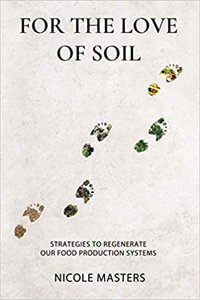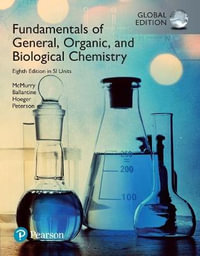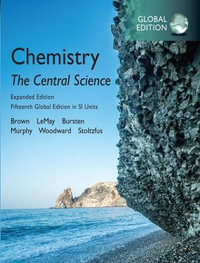Developments in Forensic Science xiii
About the Editors xv
List of Contributors xvii
Foreword xxiii
Acknowledgements xxv
1 Wildlife Ownership 1
Eric G. Roscoe and Michael McMaster
Introduction 1
Ancient Rome and the Concept of Res Nullius 2
Common Law England: The King’s Ownership 3
The New World: Hunting for the Market 5
Management: The Property Right of States 8
Federal Law and the Regulatory State 10
Globalization: Working toward Worldwide Conservation Practices 11
Conclusion 13
Cases Cited 13
References 13
2 Society for Wildlife Forensic Science 15
DeeDee Hawk
Introduction 15
Formation of the Society 19
The Code of Ethics 22
Membership of the Society 24
Member Labs 25
Proficiency Program 25
Scientific Working Group for Wildlife Forensic Sciences (SWGWILD) 29
Conclusion 32
References 33
3 The Application of Forensic Science to Wildlife Evidence 35
John R. Wallace and Jill C. Ross
Introduction 35
Overview of Forensic Science 37
History of Wildlife Forensics 39
Enforcement of Wildlife Protection Policy 44
Development of Wildlife Forensic Laboratories 45
Current Perceptions 47
Conclusion 48
Acknowledgements 49
References 49
4 Defining a Crime Scene and Physical Evidence Collection 51
Jason H. Byrd and Lerah K. Sutton
Introduction 51
Definition of a Crime Scene 51
Questions to Be Asked 52
Scene Priority 52
First Responding Officer 53
Securing the Scene 53
Chain of Custody 55
Processing the Scene 55
Initial Documentation 56
Scene Documentation 58
Remains in an Aquatic Environment 60
Collection of Evidence 61
Review of Scene Processing 62
Final Inspection 62
References 63
5 Forensic Evidence Collection and Cultural Motives for Animal Harvesting 65
Michelle D. Hamilton and Elizabeth M. Erhart
Introduction 65
Wild Animals as Pharmacopeias 66
Trade in Wild Animals 67
Recovering Evidence at Poaching Scenes 68
Locating the Burial: Anomalies on the Surface 71
Acknowledgements 76
References 76
6 Forensic Entomology and Wildlife 81
Jeffery K. Tomberlin and Michelle R. Sanford
Introduction 81
Application of Forensic Entomology to Wildlife Crimes 82
Arthropods Commonly Encountered 86
Diptera 88
Coleoptera 95
Sampling 98
Conclusion 100
Appendix 101
Acknowledgements 102
References 102
7 Wildlife Forensic Pathology and Toxicology in Wound Analysis and Pesticide Poisoning 109
Douglas E. Roscoe and William Stansley
Introduction 109
Wound Analysis 109
Wildlife Poisoning by Insecticides 121
Wildlife Poisoning by Rodenticides 123
References 125
8 The Use of Hair Morphology in the Identification of Mammals 129
Lisa Knecht
Introduction 129
Types of Hair 130
Hair Structure 131
Techniques for Studying Hair Structure 140
Conclusion 142
References 142
9 Plants and Wildlife Forensics 145
Christopher R. Hardy and David S. Martin
Introduction 145
Plants as Trace Evidence 145
Poisonous Plants 149
The Basics of Collecting and Preserving Botanical Evidence 153
Finding a Forensic Botanist 156
Conclusion 156
Acknowledgements 157
References 157
10 Identification of Reptile Skin Products Using Scale Morphology 161
David L. Martin
Introduction 161
International Trade in Reptile Skins 162
Challenges to Species Identification of Reptile Skin Products 166
Species and Products Represented in the Reptile Skin Trade 168
Reptile Scale Morphology Basics and Current Limitations 170
Identifying Features of Major Reptile Groups 178
Conclusion 194
Acknowledgements 195
References 195
11 Best Practices in Wildlife Forensic DNA 201
M. Katherine Moore and Irving L. Kornfield
Introduction 201
The Need for Appropriate Standards 203
Wildlife Forensic DNA Best Practices 206
Standards and Guidelines for Wildlife Forensics 206
Training 208
Case File 209
Laboratory Facility (QA) 213
Validation 214
Laboratory Protocols 216
Data Analysis 218
Interpretation Guidelines 220
Vouchers/Reference Samples 221
Species Identification 224
Reporting 224
Contents of the Case Report 225
Review 226
Court Testimony 229
The Way Forward 230
Note 230
Acknowledgements 230
References 231
12 Statistics for Wildlife Forensic DNA 237
B.S. Weir
Introduction 237
The Central Problem 238
Genetic Sampling 241
Lineage Markers 242
Relatedness 245
Inbreeding 247
Testing for Allele Independence 248
Assignment testing 250
Conclusion 251
References 252
13 Forensic DNA Analysis of Wildlife Evidence 253
Sabrina N. McGraw, Shamus P. Keeler, and Jane E. Huffman
Introduction 253
DNA Isolation and Handling 254
Polymerase Chain Reaction (PCR) 255
Sample Speciation 256
Minisatellites (VNTRs) 256
Mitochondrial Markers (mtDNA) 257
Additional Genetic Speciation Methods 259
Limitations of Genetic Speciation 260
Sample Sexing 261
Sample Individualization 262
Sample Localization 263
Validation of Wildlife Forensic Techniques 264
Court Admissibility 266
Conclusion 266
Cases Cited 266
References 267
14 DNA Applications and Implementation 271
Robert Ogden
Introduction 271
History 272
Questions and Techniques: Wildlife Crime Issues 272
Species Identification 273
Identification of Geographic Origin 275
Individual Identification 279
Exclusion 280
Practical Applications 282
Sample Types for DNA Analysis 282
Laboratory Models: Individual Facilities 283
Future Developments 287
Summary 288
References 289
15 Conservation Genetics and Wildlife Forensics of Birds 293
Rebecca N. Johnson
Introduction 293
Avian Genetics 295
Avian Taxonomy, Legislation and Conservation 299
Avian Wildlife Forensics: A Range of Applications 302
Conservation Genetics and Wildlife Forensics: Identification Using DNA 307
Conclusion 315
References 317
16 Wildlife Forensics in Thailand: Utilization of Mitochondrial DNA Sequences 327
Suchitra Changtragoon
Introduction 327
DNA Extraction and Amplification 327
DNA Sequencing 328
Origin Identification 328
Species and Subspecies Identification 328
Results of the Investigations 330
Conclusion 338
Acknowledgements 341
References 341
17 The Future of Wildlife Forensic Science 343
Edgard O. Espinoza, Jesica L. Espinoza, Pepper W. Trail, and Barry W. Baker
Introduction 343
Technical Challenges 344
Enhancing Wildlife Protection by Integrating Forensic Science and the Law 350
The U.S. Endangered Species Act and the Limits of Science 351
The Future of Forensic Scientists and the Laboratories in which They Work 353
Conclusion 355
Acknowledgments 356
References 356
Index 359
























